Experiments with HDR
I've been suspicious of HDR (High Dynamic Range) photography since I first came across it. This is mainly down to the way that people tend to go overboard on it and create something that looks like it went through the mind of a person on an acid trip. Not that I'd know what that's like, of course. However, I recently subscribed to Kelby Training and there are some good HDR related presentations on there, so I figured I'd give it a shot. They recommended the use of a program called Photomatix, and they were pretty adamant about it. I gave the trial version a shot and I was impressed, so I bought the real thing.
HDR, in a nutshell, allows us to photograph a scene and have it rendered pretty much as we saw it. Cameras can't see like our eyes can; the human eye has a far greater range in the way it can see into darkness and light. Compared to our eyes, the camera just can't see as well. This is why if you have a scene with light and dark parts, you're almost certainly going to lose one or the other. Get the light part right and the dark park will be solid black; get the dark part right and the whites will have no detail at all.
The idea behind HDR is to take a number of pictures of the same thing (I take 5), ranging from correctly exposed to intentionally overexposed and intentionally underexposed. Then the aforesaid clever piece of software names Photomatix combines them all together and the end result should, if done properly, be fairly close to what you really saw in front of you.
This is literally my first experiment with this stuff, but you have to start somewhere.
This is the first one I got that I liked. Without HDR, the areas surrounding the green lanterns would have been almost pure black (and I know this because I took a single picture, and it was pure black). The 5 pictures combine into one and give you the colours and detail that you would have missed. I have to admit to being pretty blown away by what the software produced:
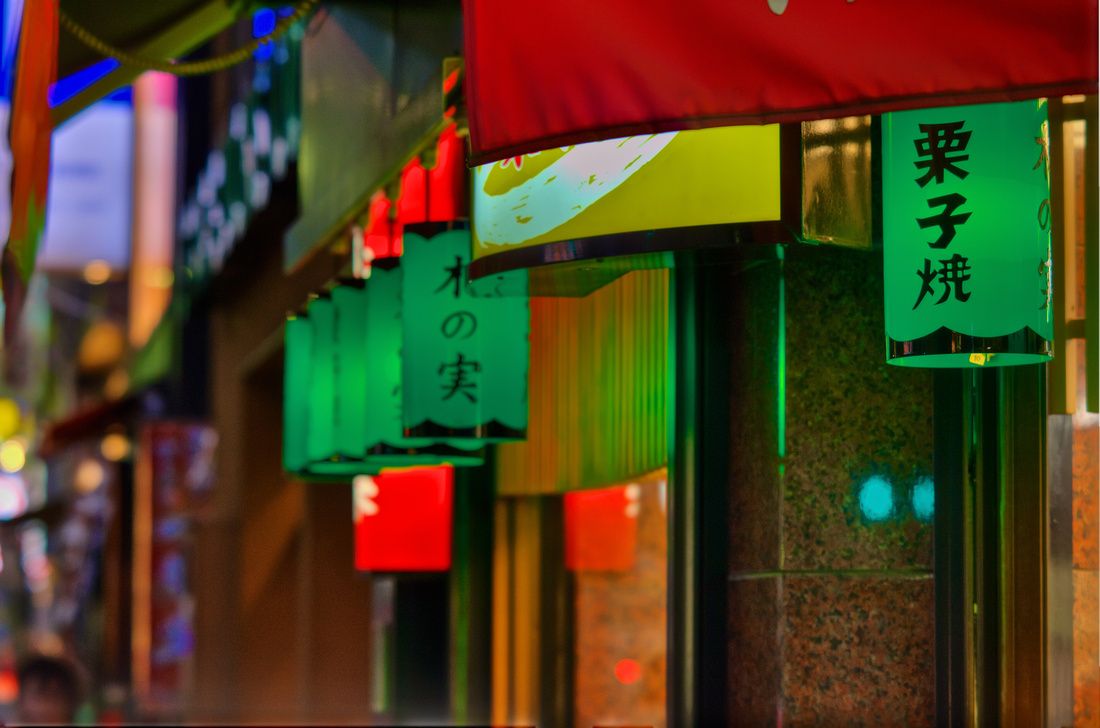

This was taken when it was borderline outright dark. A normal photo would have got the lanterns right, but the rest would have been a big dark mess.
A lot of my first experiments took place in a local park, on a day when there was a big light-shade disparity. Perfect for what HDR aims to do. Here are some shots from that park.
The entrance to the park presents us with the following scene. The idea of HDR - for many people - is to use it so that it's not obvious that you used it. I'm certainly not there yet (the sky's not right), but I'm hoping to avoid the totally over-the-top effect that some people seem to like. This isn't far from what I saw, although it's more saturated and doesn't look entirely natural (again, down to my inexperience with this form of photography)
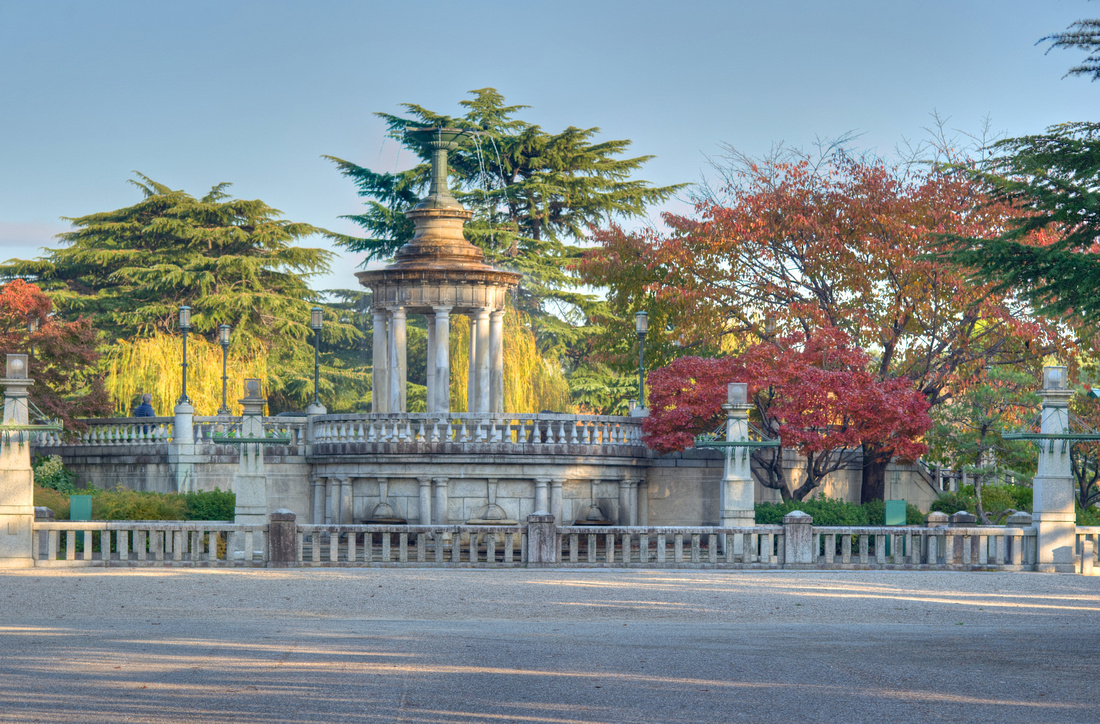

I shot this statue wide open with the 105 DC F2, with manual focus, and I didn't nail it completely. It's reasonably close viewed at this size though. This one strikes me as not too obviously HDR-ish.
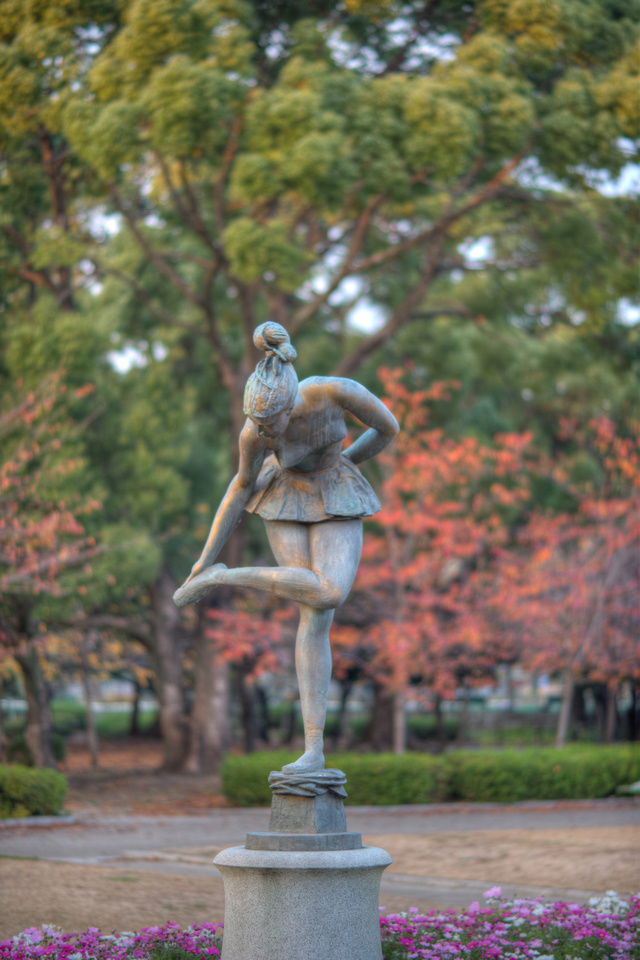

The autumn foliage is starting to peak in this part of Japan, and combined with the sunny day, it was particularly impressive. Again, the strong sun and dark shadows are a losing proposition for normal photos, but the HDR makes it much easier:
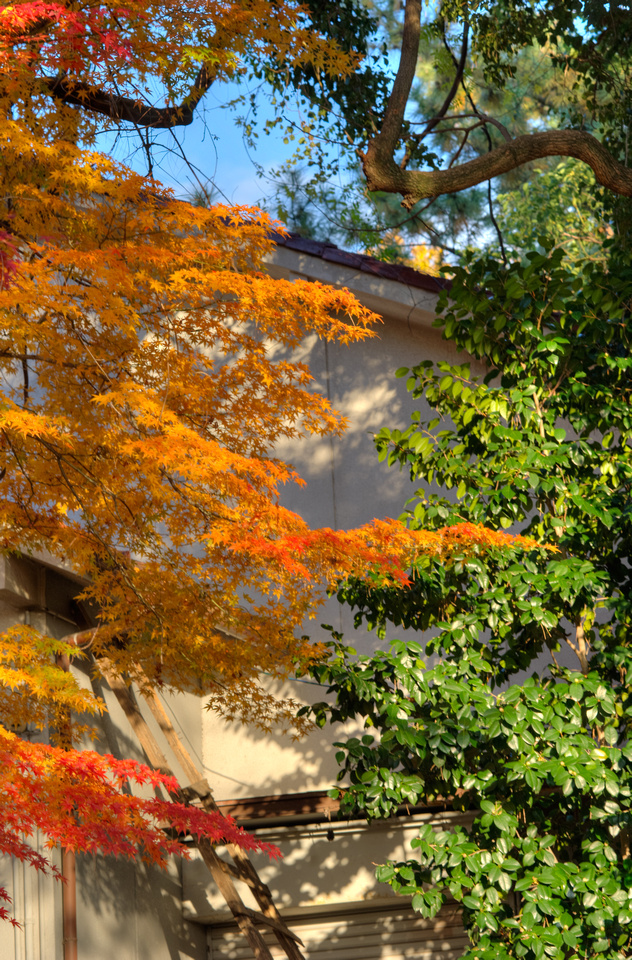

One more of the leaves:


The park has plenty of places with strong dappled light, which is usually a problem for exposure. Again, the HDR gives a more accurate picture of what was really there:
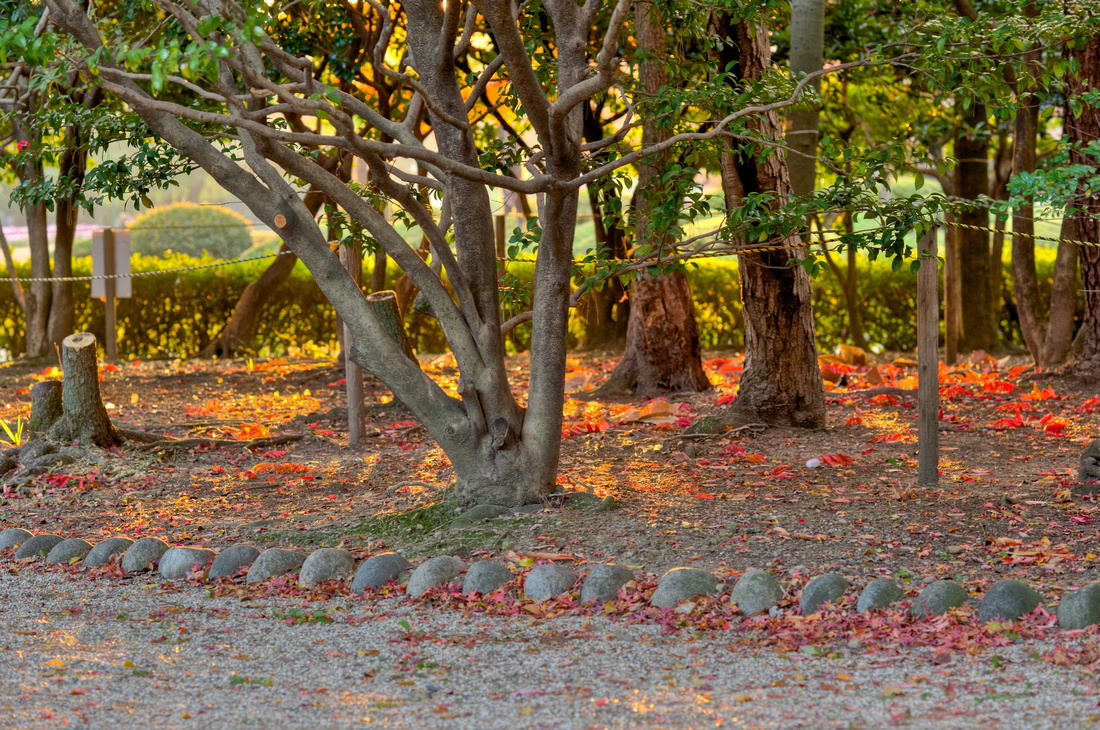

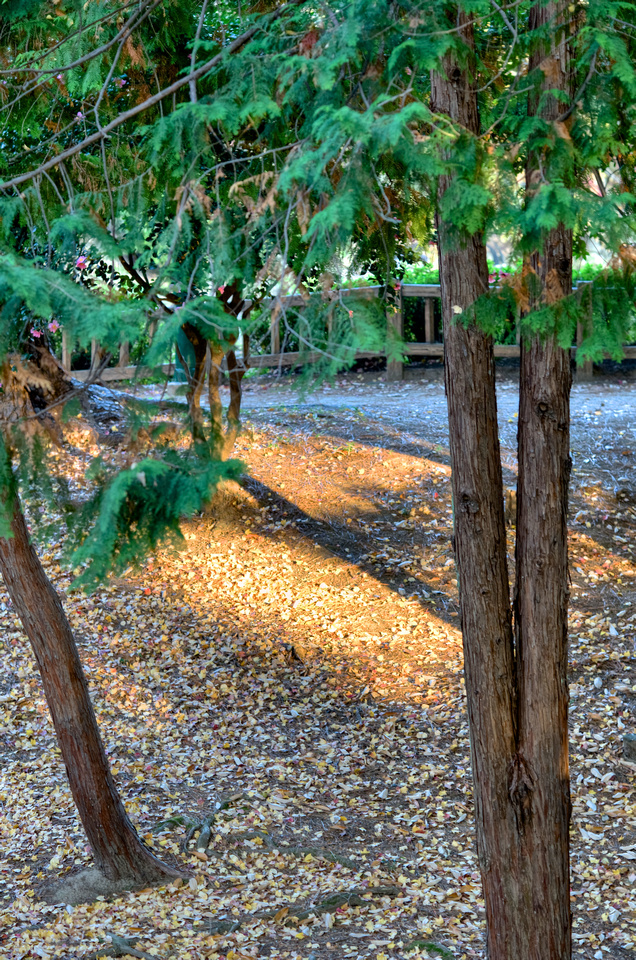

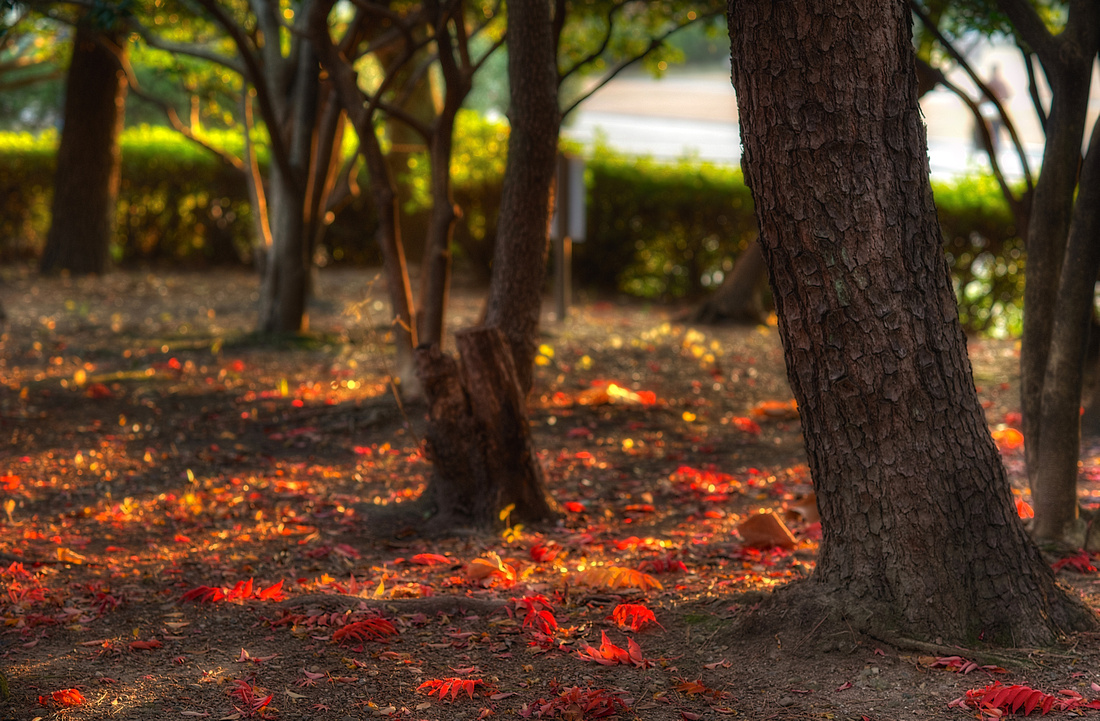

There's a lake (of sorts) as well, with a nice variety of foliage surrounding it. The colours range from very dark greens to light yellows, reds and oranges. Again, a candidate for HDR
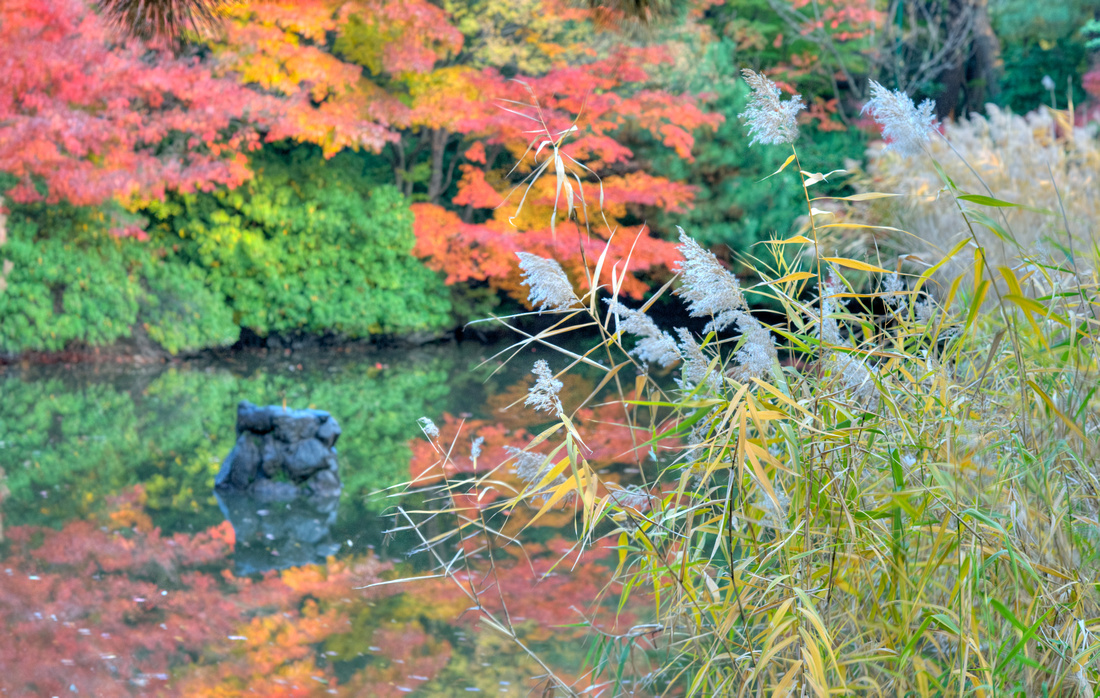

This one in particular benefited from the HDR toning; the spiky plant in the foreground was way, way darker than the foliage in the background.
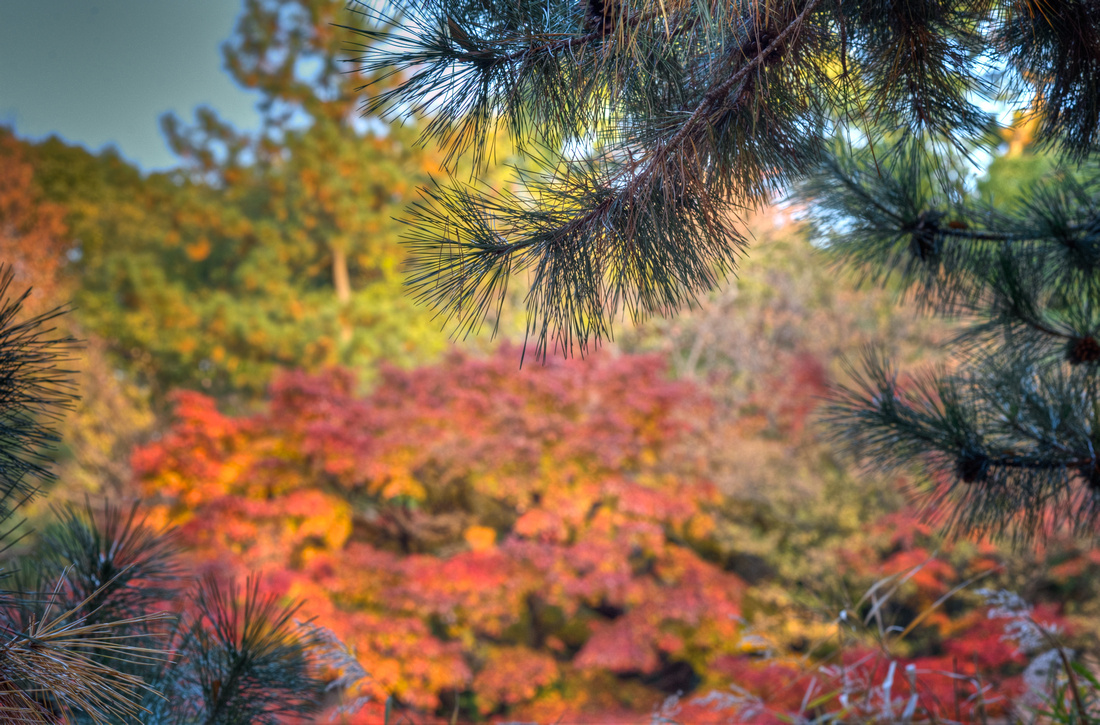

I shot a few pictures on the way out of the park. The sun was going down and there was a lot of contrast up there.


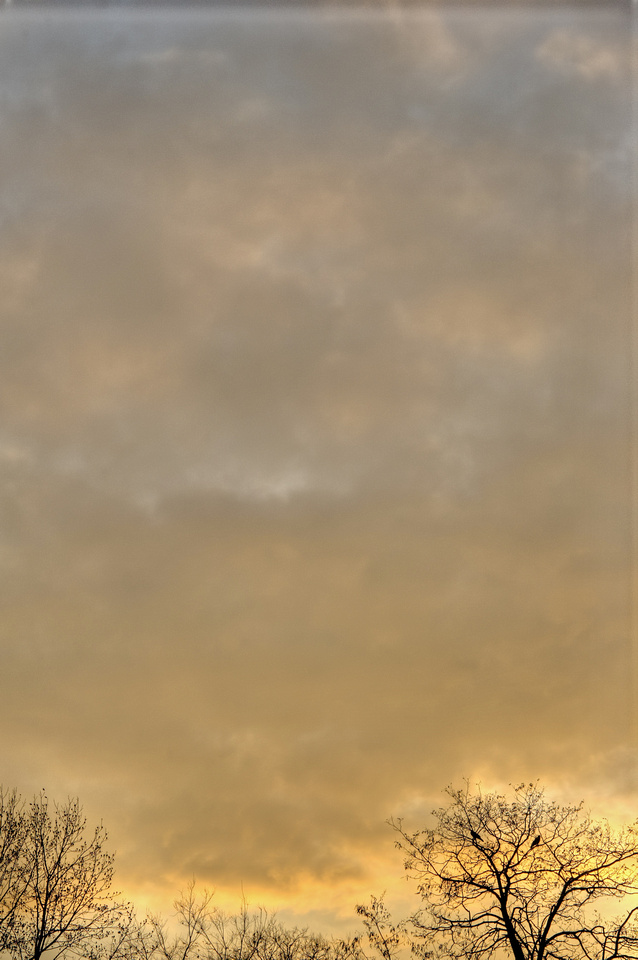

I'm still so green with HDR that I don't know if the light surrounding the tree on the right is incredible luck with the sunlight or an unwanted HDR effect. I'm going to pretend that it's the former.
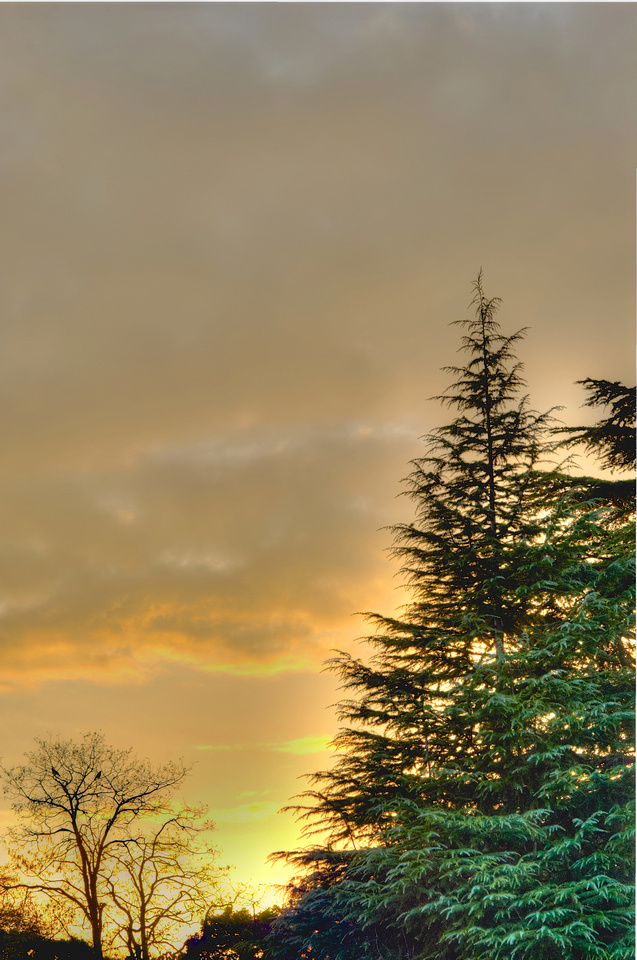

I'm going to try and only use this technique when it's needed, but I think it will definitely come in useful from time to time.
Thanks for looking!
Comments
This is a collection of posts. Some (most) have a particular theme, but some are just collections. I try to only include my best shots in here.
If you like what you see, please leave a message and I'll try to answer all comments.
Thank you!